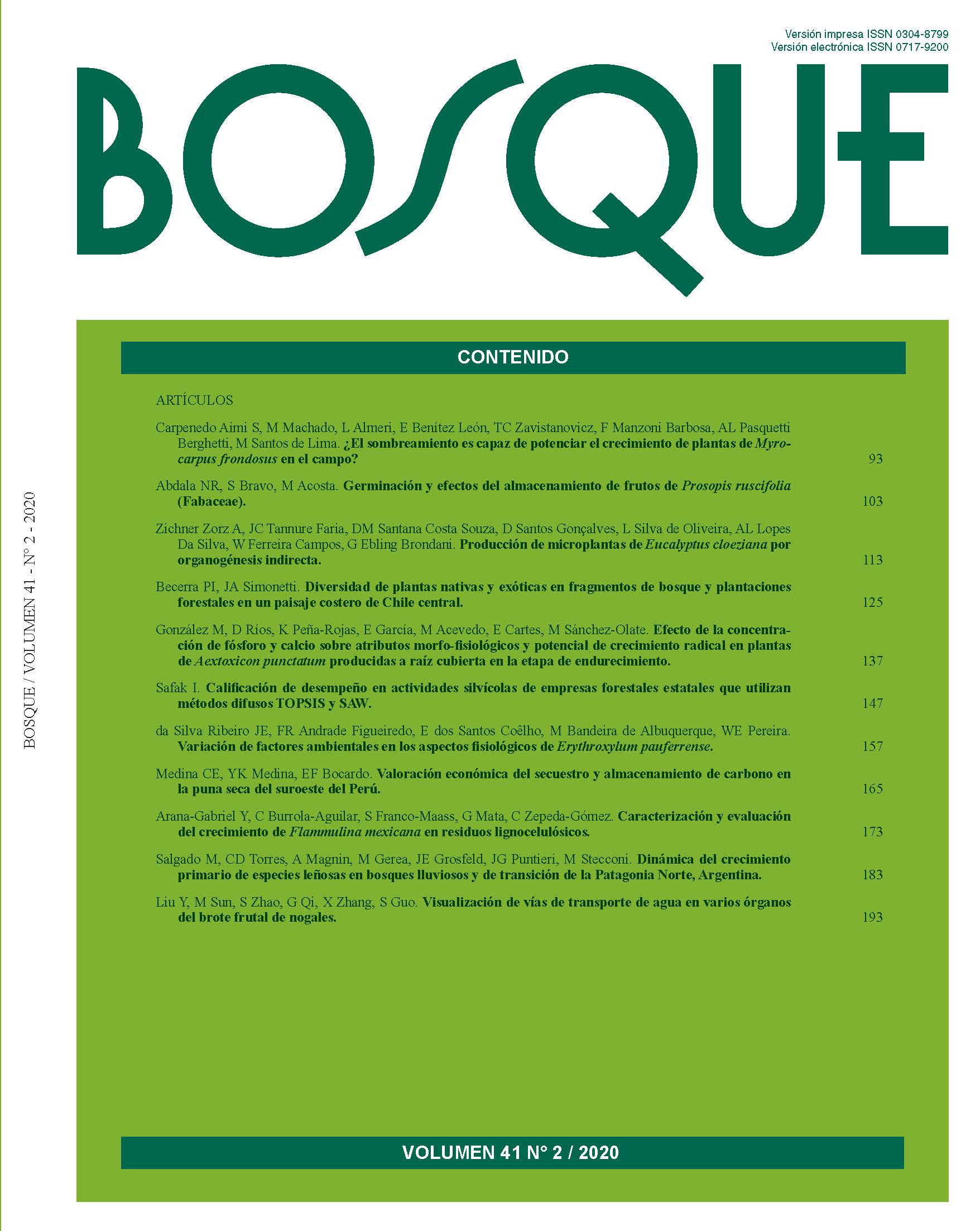Effect of phosphorous and calcium concentration on morpho-physiological attributes and root growth potential of Aextoxicon punctatum plants produced by covered root during hardening stage
Main Article Content
Abstract
The success of restoration programs through the establishment of a vegetable cover on altered areas is directly related to morpho-physiological attributes of plants established on field conditions. These attributes have been mainly studied on many species at national and international level, while research on native species is still incipient. The objective of this research is to determine the effect of different concentrations of phosphorous and calcium during nursery hardening stage, on morphological attributes (stem length, stem diameter, leaf area), physiological (nutritional status) and root growth potential (number and length of new roots) in olivillo (Aextoxicon punctatum) plants produced by covered root. Nine fertilization schemes were designed with three different concentrations of phosphorous and calcium each (0, 150 and 300 mg L-1). After 13 weeks, corresponding to the hardening period, no significant differences were observed among treatments for morphological variables. However, treatments with applications of 300 mg L-1 of phosphorous induced higher nitrogen and lower calcium foliar concentrations. Higher calcium concentrations (300 mg L-1) induced higher foliar concentrations of this element and higher number and length of new roots.

